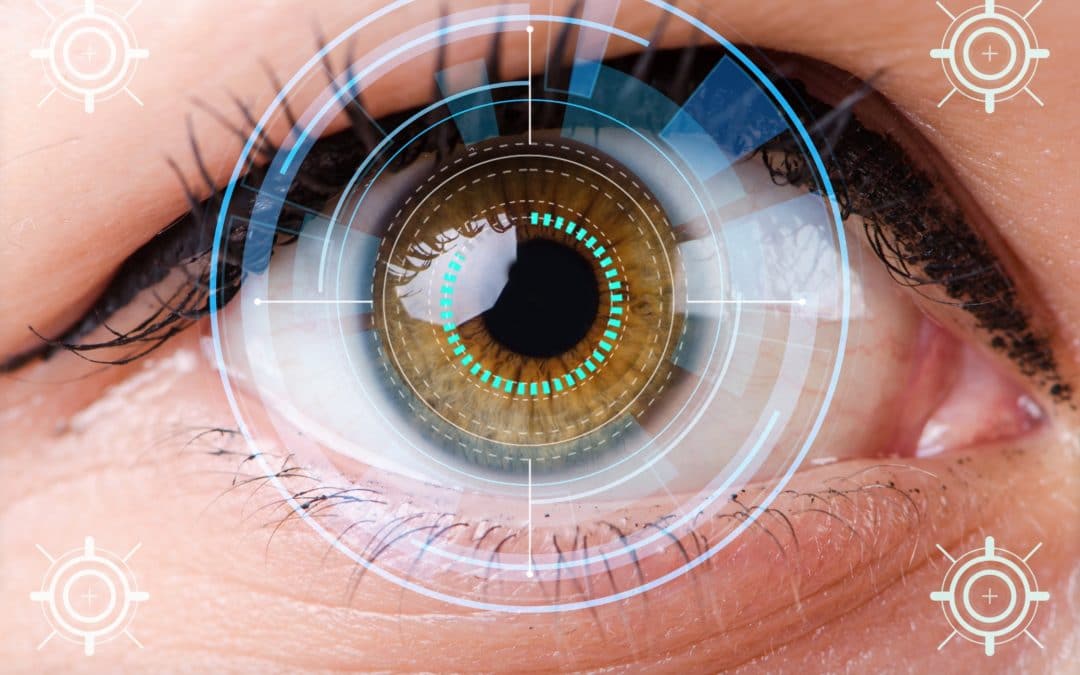
by Alliance VITA | June 23, 2021 | Gender, News
Gender dysphoria is a medical term listed in American Psychiatric Association’s textbook to describe the distress resulting from the incongruence between the gender assigned at birth and the gender with which one identifies.
It is “characterized by a strong and persistent cross-gender identification associated with anxiety, depression, irritability and, often a wish to live as a gender different from the one associated with the sex assigned at birth. Subjects with gender dysphoria often believe themselves to be victims of a biological accident and are cruelly imprisoned in a body incompatible with their subjective gender identity. The most extreme form of gender dysphoria is called transsexualism.”
In just a few years, this phenomenon has evolved exponentially from extremely rare to commonplace. “It is a tidal wave”, says Dr. Serge Hefez in Paris, one of the first psychiatrists specialized in consultations for those experiencing this distress, usually surfacing at adolescence, or sometimes earlier, during childhood. The number of gender clinics has increased in the United States, from two in 2007 to well over 50 today. Between 2016 and 2017, the number of females seeking gender surgery quadrupled in the United States. Currently 2% of American high school students, predominately teenage girls, claim to be transgender. In 2001, only 12 individuals under age 25 in Sweden had received a diagnosis of gender dysphoria, whereas by 2018, the number of cases rose to 1,859.
Associations estimate the number of transgender individuals at 15,000 in France
In her book “Irreversible Damage ” which investigates the craze of transgender children and adolescents in the US, an American journalist, Abigail Shrier, deems that “social contagion” is at play when clusters of adolescents decide to start “transitioning”. In an interview she declared: “Online ‘influencers’ are largely responsible for spreading feelings of inadequacy about one’s own body and encouraging the idea that any perceived failure of perfect femininity means that a girl is probably transgender.”
Nonetheless, child psychiatrist Agnès Condat, who has already evaluated than 200 young patients, contends that the causes of gender dysphoria are multi-factorial. Many hypotheses have been postulated based on psychosocial issues in the family (poor father-son or mother-daughter relationships), biological abnormalities due to hormonal exposure, or environmental causes, etc., although the data is still insufficient to justify any of these theories.
As the first country in the world to recognize gender dysphoria, and allow formal civil registration of “sex changes”, Sweden is now re-considering certain policies due to the growing numbers of transgender individuals. Sweden was also the first country to endorse gender transition treatments in its’ public clinics, starting at age 16. This includes prescribing puberty-blockers for the youngest, injecting testosterone or estrogen, performing chest surgery, changing one’s voice with the help of speech therapists, transplanting or removing hair, etc. From age 18 onward, genital operations have been permitted, to create a penis from the clitoris, or to form a vagina by inverting the skin of the penis or the intestine. The country’s first hospital to pioneer hormonal treatment for gender dysphoria has now invoked the precautionary principle, which effectively puts an end to routine hormonal treatment for all youth under 18, except for clinical trials.
In June 2020, Finland changed its’ policy to recommend that psychosocial support should be the primary course of treatment offered for gender dysphoria. In the same year, the UK began to require court-orders for puberty-blockers for youth aged 16-18 and suspended them altogether for younger children. This decision followed the landmark case of Keira Bell against the London clinic that performed her double mastectomy and prescribed “sex change” hormones. The court’s upheld Ms. Bell’s claim that regrettably, she’d been rushed through gender reassignment without proper safeguards.

by Alliance VITA | June 10, 2021 | News, Bioethics Law
Alliance VITA denounces the way ethical red lines were crossed when the legislation was forced through the National Assembly in third reading. In total disregard for the fundamental principles of human ecology, this law puts in danger the rights of the most vulnerable individuals and will have consequences on future generations and implications for the direction of future research. Alliance VITA demands that the French be informed of the amendments contained in this new bioethics law.
President Macron’s majority group continues to obstinately yield to adults’ interests and ignore the rights of the child, allowing a new form of ART (Artificial Reproductive Techniques) which deliberately deprives the child from having a father.
The government creates unprecedented changes in filiation which will foster a new kind of discrimination between children, since some will intentionally be cut off from their biological origins. Although parliamentarians from various political persuasions voiced their opposition, the government and its majority also passed measures allowing private institutions to manage sperm banks and stocks of human embryos, thereby opening the door to the reproductive marketplace.
By permitting the manufacture of human-animal chimeras and genetically modified human embryos, in total contempt of the precautionary principle, red lines are being crossed, which endanger the very integrity of the human species.
Alliance VITA deplores this headlong rush when an IFOP poll, published at the beginning of the week, has just confirmed that the French are basically in the dark regarding the amendments of the new bioethics law. The results of the poll also pointed out the request by the French that a precautionary principle be applied in bioethics and that limits be placed on research that could jeopardize the integrity of human beings.
For Alliance VITA, by capitulating to the lowest “ethical” denominator, the law of the strongest prevails. By forcing through this legislation, the government is hereby increasing the disparity between the bioethics law and the French citizens’ true expectations. We demand for political leaders to be consistent and to respect the global ecology which includes respecting humanity.
In the coming days, Alliance VITA will launch a major information campaign on the contents of the bioethics law, for the French, who were deliberately deceived by the emphasis given to the so-called “ART for all”.
![[Press Release]: French Bioethics Law: Definitely No Consensus](https://www.alliancevita.org/wp-content/uploads/2020/08/PJLBioethique_AN-1080x675.jpg)
by Alliance VITA | June 3, 2021 | Press Releases, Bioethics Law
At the third reading in the Special Committee, the National Assembly totally ignored the ethical changes made on the law by the Senate, and produced a text almost identical as the one of the second reading.
Since the beginning, Alliance VITA has denounced some radically transgressive measures in this bioethics law which flouts the fundamental principles of human ecology and the rights of the most vulnerable in our society, and will have consequences on future generations and future direction for research.
Once again, President Macron’s majority group has ignored the rights of the child and capitulated in front of adult interests allowing a new form of ART (Artificial Reproductive Techniques) which deliberately deprives a child from having a father. The majority group also persisted in allowing still more genetic manipulations on living organisms in total contempt of the precautionary principle.
Red lines are being crossed thus putting in danger the very integrity of the human species. Indeed the new law allows to manufacture human-animal chimeras and genetically modified human embryos.
Nonetheless it is a relief to note that one amendment was rejected which would have allowed healthy babies to be aborted up until the date of birth, by using the vague and unverifiable criterion of “psychosocial distress”. This provision would have provided a loophole to completely by-pass all current abortion laws.
Voted on the sly last summer, this measure, similar to infanticide, had shocked prominent figures from many political lines.
Alliance VITA and its’ members are dedicated to the protection of the rights of the most vulnerable, and remain fully committed to use all legal means available to demonstrate their opposition to this law.

by Alliance VITA | May 28, 2021 | News, Gene therapy
Pigmentary retinopathy is a heterogeneous group of inherited eye diseases that affects vision and sometimes causes blindness. All forms of this disease lead to progressive degeneration of the photoreceptor cells in the retina. Although rare, it is the most common hereditary eye disorder, affecting approximately 30,000 individuals in France and 400,000 in Europe.
Normally, the eye’s photoreceptor cells transmit the light signal to the ganglion cells or neurons in the retina. Each cell has a fine nerve extension around ten centimeters long, which together form the optic nerve and convey the visual message to the brain.
In pigmentary retinopathy, photoreceptors lose their normal function. Sometimes, however, the ganglion cells continue to operate correctly and can therefore detect a visual signal which can then be transmitted to the brain.
On May 24, 2021, the journal Nature Medicine published the results of a study carried out by an international research team[1] which demonstrated for the first time ever, that optogenetic therapy can partially restore vision in a blind patient with pigmentary retinopathy. This is a new field of research and development that has emerged over the past twenty years, which combines genetics and optics. Optogenetics involves genetically modifying cells in the eye to restore or correct their functioning, in the hope of restoring light-sensitivity to the cells.
This clinical study was carried out on one patient, whose retinal cells were genetically modified to enable them to produce an opsin that detects amber light. Opsins are proteins which react to light energy and are involved in the vast majority of photosensitivity processes.
Using a virus as a carrier, the gene that encodes this opsin, known as ChrimsonR, was injected into the patient’s retina in March 2019 in Paris at the Hospital “Des Quinze-Vingts”. This was followed by a latency period of several months to allow time for the retinal cells to stabilize this gene expression.
Tests were then performed to study the effects of the gene therapy. The researchers designed specially equipped glasses for the patient which included a built-in camera that transforms the surrounding images into amber-colored images. These images are then projected onto the patient’s eye, and thus onto his retina, in the appropriate wavelength for the sensitivity of the synthesized opsin.
With the help of these glasses, the patient demonstrated visual improvement. Test results showed he was able to touch the perceived object 92% of the time, to accurately count objects 63% of the time, although he could only grasp the object 36% of the time.
The patient’s brain activity was measured during a test to detect the presence or absence of an object. According to Botond Roska, one of the professors who led this clinical study, this evaluation demonstrated that changes in brain activity were concentrated in the visual cortex and thereby “confirmed that brain activity is indeed related to the presence of an object, thereby proving that the retina is no longer blind”.
Professor José-Alain Sahel, one of the directors for the clinical trial concluded that:
“Blind people with different types of neurodegenerative diseases of the photoreceptors and a functional optic nerve will potentially be eligible for treatment, but it will take time before this therapy can be proposed. GenSight Biologics intends to launch a Phase III trial in the near future to confirm the efficacy of this therapeutic method“.

by Alliance VITA | May 27, 2021 | News, Population
On 12 May, the High Commissioner for Planning in France, François Bayrou, issued a report on demography as being “fundamental to preserving our social model”.
The post of High Commissioner for Planning was recently created in September 2020 and assigned to François Bayrou. He is responsible for coordinating the planning and analysis of reflective work carried out on behalf of the State, which is intended to help public authorities make informed choices regarding demographic, economic, social, environmental, health, technological and cultural issues.
In the report’s lengthy introduction, Bayrou cites three dimensions of demographics: at the intersection between personal and family choices, as part of a national community and its’ impact on an international equilibrium. The report especially highlights the situation in France, where at the end of WWII, the choice was made to base its’ society on the principle of ‘all for one’. Thus, in the preamble to the 1946 constitution it is stated that “The Nation shall ensure that the individual and the family have the necessary conditions for their development”. This applies to pension systems, with the emblematic choice of distributing pension funds rather than encouraging savings and capitalization, and to the health system, unemployment services and even education. This choice leads to very high public expenditures compared to other countries. But the corollary is, according to the so-called “Gini index” (indicator of income inequality), and other measurements, that France has a good rating when it comes to providing economic and social protection to those in need.
Bayrou’s report presents a dynamic demography, in particular the ratio between active and non-active individuals, as the stronghold for this social system where allotments and distribution are important.
On a national basis, the report also highlights the disparity between regular opinion polls showing that the French wish to have more children, and the decline in fertility. Surveys continue to demonstrate that “the French continue to want three children although in recent years, the average is a little less than two.”
In a related report, the “INED” (National Institute of Demographic Studies) points out, that due to positive intentions regarding fertility there is a tendancy to over estimate the behaviour with regards to fertility. In other words, the intention to have a child is not materialised in real life, due to many factors mentioned in the report, such as “single-parent” families and having to balance personal, professional and family life. Although the French fertility rate, is below the generational replacement level (2.10), it is among the highest in Europe at 1.89 in 2018. But in the long term, this level cannot balance the expeditures of the social protection system.
Part of the report deals with comparative demographic trends, where France possibly appears as the most fertile country in an ageing Europe.
The report recommends that public authorities use two leverages: a policy for encouraging higher birth rates, and immigration. Regarding the latter point, which is discussed at length, the report points out that immigration does not account for the relative dynamics of French demographics. It calls for immigration to be considered politically, and emphasizes the integration and cohesion challenges for society.
Also addressed is the current Malthusian-sounding theme “population versus the planet”, promoted by slogans such as “Ginks” (Green inclination no kids). The report gives two reasons for overlooking such belief. The first one is the relatively small impact of France’s 70 million inhabitants compared to a world population projected at 10 billion in 2050. The second one deals with the shifting horizons of climate change and demographics. Climate issues are projected for 20 to 30 years ahead whereas demographic trends have a further impact and are difficult to reverse as can be observed for example in some Asian countries.
Thus, when China announced the official end of the birth restriction policy, on October 29, 2015, there was not much impact on natality, as reported by an AFP dispatch on February 9th, based on data from the Chinese Ministry of Public Security. In 2020, China’s birth rate continued to decline to 10,04 million births, representing a 14,8 % drop compared to 2019.
Over the Alps, the General States of Birth held in Rome expressed some concern about the demographic trends. The. Italian Prime Minister, Mario Draghi, announced the implementation of an allowance, similar to the French family allowances. Pope Francis, present at the event, declared that a “society that does not welcome life, stops living” and that it is necessary to “give stability to the structures that support and promote families and new births”.



![[Press Release]: French Bioethics Law: Definitely No Consensus](https://www.alliancevita.org/wp-content/uploads/2020/08/PJLBioethique_AN-1080x675.jpg)

